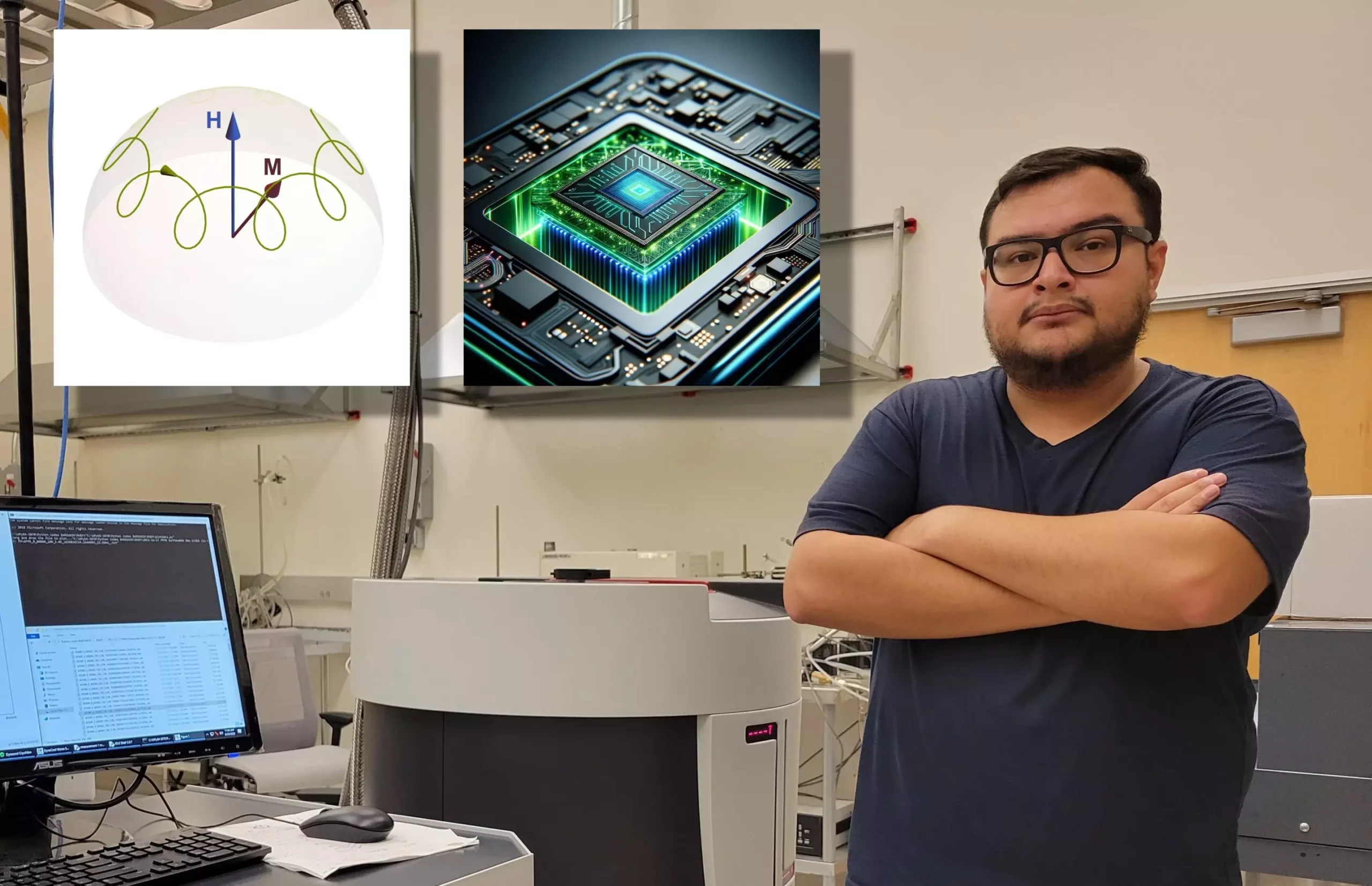A recent study conducted by an international team of researchers at the University of California, Riverside, has uncovered a significant breakthrough in the field of ferromagnets. The research, titled “Spin inertia and auto-oscillations in ferromagnets,” published in Physical Review Letters, has been recognized as an editors’ suggestion, indicating its importance in the scientific community. This breakthrough has the potential to revolutionize the way we harness ultra-fast spin behavior in ferromagnets, opening up possibilities for next-generation communication and computation technologies.
Ferromagnets are materials where electron spins align in the same direction, giving rise to spin waves, which are essential for processing information and signals in emerging computer technologies. These spin waves play a crucial role in the operation of devices such as smartphones and computers, which currently operate at gigahertz frequencies. However, the new research suggests that by harnessing nutational oscillations at ultra-high frequencies, we could achieve terahertz frequencies, making these devices operate a thousand times faster.
One of the key findings of the study is the discovery that injecting a spin current with the “wrong” sign can excite nutational auto-oscillations in ferromagnets. These self-sustained oscillations hold great promise for the development of next-generation computation and communication technologies. By harmonizing spin-current-driven dynamics and spin inertia, researchers have been able to unlock new possibilities in the field of magnetism research.
While the research represents a significant step forward in our understanding of spin behavior in ferromagnets, there are still many challenges to overcome. The field of ferrimagnets, where two antiparallel spin lattices have an unequal amount of spin, presents new opportunities for ultrafast applications. However, technological challenges remain, and further research is needed to fully exploit the potential of these materials.
As we continue to push the boundaries of what is possible with ferromagnets, the potential for ultra-high frequency applications becomes increasingly apparent. By leveraging the insights gained from this research, scientists and engineers can work towards developing new technologies that operate at speeds previously thought impossible. The discovery of nutation in ferromagnets opens up a wealth of new possibilities for the future of communication and computation, paving the way for a new era of innovation and discovery.


Leave a Reply